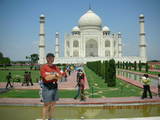
|
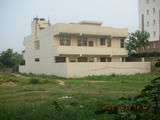
|
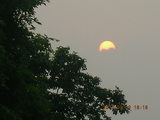
|

|
INDIA IN 2007
2007 October 15

|

|

|

|
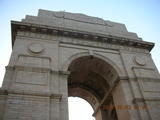 It's an ordinary business trip to India,
just like thousands of Americans take business trips to India,
and I'm writing a web page about it.
Why am I writing a web page about an ordinary business trip?
It's an ordinary business trip to India,
just like thousands of Americans take business trips to India,
and I'm writing a web page about it.
Why am I writing a web page about an ordinary business trip?
| • | Maybe because it's my web site and I can write about whatever I want. |
| • | Maybe because my web site is just my 'blog (short for weblog). |
| • | Maybe because India is anything but ordinary for most Americans. |
| • | Maybe the next American going to India might want some idea what to expect. |
| • | Finally, maybe there's something happening here. |
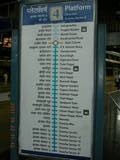 I played two roles in this trip,
I was a tourist at
the
Taj Mahal
(and not the Trump
Taj Mahal
Casino in Atlantic City)
and in
Delhi.
I was also on a
business mission
to work with new colleagues in Gurgaon.
I played two roles in this trip,
I was a tourist at
the
Taj Mahal
(and not the Trump
Taj Mahal
Casino in Atlantic City)
and in
Delhi.
I was also on a
business mission
to work with new colleagues in Gurgaon.
It may be a cliché, but Americans see the world through American eyes. More generally, westerners see the world through western eyes. India is not the west. As India embraces the ways of the west, as it is starting to look like the west, India is still not becoming the west. It is finding its own future, influenced by us but not being like us.
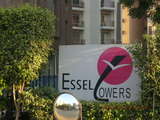
|
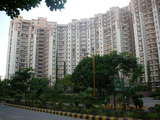
|
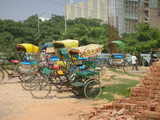
|
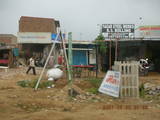
|
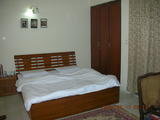
|
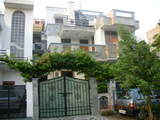
|
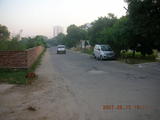
|
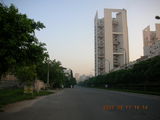
|
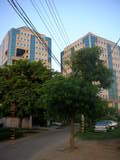 A standard part of international travel
to anyplace outside of the developed west
is the medical visit.
I'm up to date on most of my
shots,
but I decided to get the rabies series of three injections
because I like to run outdoors every day.
Since I've been to central
Africa,
India's medical requirements no longer bothered me.
A standard part of international travel
to anyplace outside of the developed west
is the medical visit.
I'm up to date on most of my
shots,
but I decided to get the rabies series of three injections
because I like to run outdoors every day.
Since I've been to central
Africa,
India's medical requirements no longer bothered me.
India's tap water and uncooked foods will make westerners sick the first time, different bugs in the digestive system cause "Delhi-belly," many visits to the rest room on short notice. One strategy is drinking a glass of water early and getting the indigestion over with, or one can "stay clean" for shorter visits as I do. That means staying on bottled water for drinking and brushing teeth and being careful in the shower not to swallow. I was warned that some less-scrupulous vendors are selling Indian tap water in nice-looking bottles, so I should stick with name brands or carbonated water.
If you're coming from the United States,
then it's a long trip to India
with a serious time change.
From Phoenix (PHX)
I took a nearly-four-hour flight to Chicago (ORD)
and a fifteen-hour nonstop to Delhi (DEL).
From Mountain Standard Time (MST),
India Standard Time (IST) is 12.5 hours ahead.
India is on a half-hour time zone for
some reason.
Different people have varying tolerance for time changes.
I have a tough time with six hours East
and must less trouble with twelve hours,
at least the first time.
Coming back home,
the second 12-hour time change,
gives me a hard time.
The guest house is a large apartment in a high-rise called
Essel Towers.
It had several bedrooms
sharing a common center area with dining and television area
staffed by a couple of Nepali guys who took care of
those staying there.
The bedroom had a bed, desk, ample closet space,
and western-toilet bathroom with ample shower.
The meals cooked for us were superb
and I opted mainly for local, Indian food.
I didn't come halfway around the world
to eat American cuisine, right?
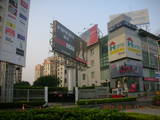 My own recommendation is to get the medical stuff done early
for international travel.
Several of the injection sequences take several weeks and
do you really want to be feeling lousy from vaccinations
right before a long trip?
For Africa,
I was paranoid enough about being early
to get my yellow-fever shot a year before my trip
and the others months in advance.
For India, two months should be plenty of advanced medical planning.
My own recommendation is to get the medical stuff done early
for international travel.
Several of the injection sequences take several weeks and
do you really want to be feeling lousy from vaccinations
right before a long trip?
For Africa,
I was paranoid enough about being early
to get my yellow-fever shot a year before my trip
and the others months in advance.
For India, two months should be plenty of advanced medical planning.
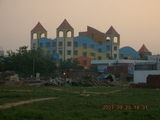 I got to Indira Gandhi International Airport (DEL)
in Delhi at 8:30 in the evening,
was met by my company-hired driver,
and was driven about twenty minutes
to the company's guest quarters
in Essel Towers,
a lovely complex in Gurgaon.
I got to Indira Gandhi International Airport (DEL)
in Delhi at 8:30 in the evening,
was met by my company-hired driver,
and was driven about twenty minutes
to the company's guest quarters
in Essel Towers,
a lovely complex in Gurgaon.
Taj Mahal and Agra Fort
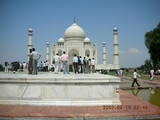
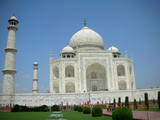
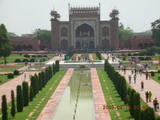
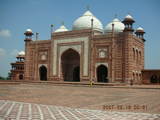
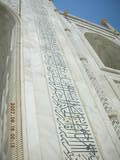
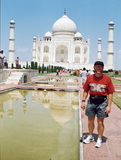
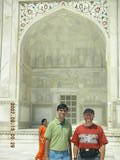
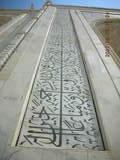
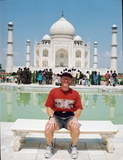
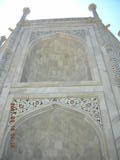
Taj Mahal and Agra Fort
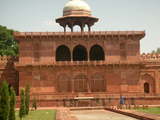
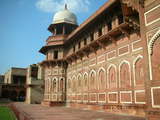
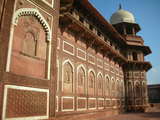
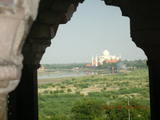
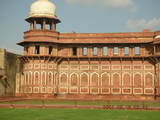 My first morning in India I was met my my host, Sudhir,
who hired a driver to take us to Agra and the Taj Mahal.
There isn't much to say about the Taj Mahal
the same way there isn't much to say about the Grand Canyon,
which is where I took Sudhir when he visited me in Scottsdale.
As usual, the
Wikipedia
article is lucid and satisfying.
It may even be right.
My first morning in India I was met my my host, Sudhir,
who hired a driver to take us to Agra and the Taj Mahal.
There isn't much to say about the Taj Mahal
the same way there isn't much to say about the Grand Canyon,
which is where I took Sudhir when he visited me in Scottsdale.
As usual, the
Wikipedia
article is lucid and satisfying.
It may even be right.
What I can tell you is that seeing this monument to Mumtaz Mahal makes Helen of Troy seem like plain-Jane. As I understand, after his first two wives bore no children, emporer Shah Jahan married young Mumtaz who bore thirteen children and died giving birth to number fourteen. He built Taj Mahal as a resting place for his beloved wife.
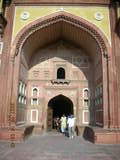 After Taj Mahal was finished,
Shah Jahan was deposed and
his son imprisoned him in Agra Fort
where he could look out his window and see Taj Mahal.
When he died, he was buried next to his wife.
After Taj Mahal was finished,
Shah Jahan was deposed and
his son imprisoned him in Agra Fort
where he could look out his window and see Taj Mahal.
When he died, he was buried next to his wife.
Taj Mahal may evoke images of serenity, but the trip from Gurgaon to Agra was anything but serene. The new roads are smoother and faster than earlier routes, I'm told, but Agra itself is a small town with big traffic going to the most popular tourist attraction in India. Sudhir and I enjoyed our four-hour trip with a half-hour stop for breakfast along the way. We covered the last mile (1600 meters) by human-powered bicycle-rickshaw as they keep internal-combustion vehicles away from Taj Mahal to keep air pollution from destroying the marble.
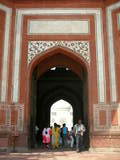 Once we arrived, we got a guide named Ani to guide us
(reminds me of
Jackie Vernon
on the Ed Sullivan Show).
The guides have a good deal
as they take you to their vendors for
restaurant meals,
professional photographs,
inlaid marble souvenirs,
Indian rugs,
and precious stones including the
Star of India.
I'm sure he gets generous kickbacks from these vendors,
but the other side of the equation
is that we got tasty food,
good pictures,
and beautiful souvenirs.
Surhir even bought his wife a sapphire
from the Star-of-India gem merchant.
While we were near Taj Mahal,
we saw camels and an elephant
in addition to the usual Indian
bovine, porcine, feline, and primate managerie.
Once we arrived, we got a guide named Ani to guide us
(reminds me of
Jackie Vernon
on the Ed Sullivan Show).
The guides have a good deal
as they take you to their vendors for
restaurant meals,
professional photographs,
inlaid marble souvenirs,
Indian rugs,
and precious stones including the
Star of India.
I'm sure he gets generous kickbacks from these vendors,
but the other side of the equation
is that we got tasty food,
good pictures,
and beautiful souvenirs.
Surhir even bought his wife a sapphire
from the Star-of-India gem merchant.
While we were near Taj Mahal,
we saw camels and an elephant
in addition to the usual Indian
bovine, porcine, feline, and primate managerie.
Our guide Ani showed us the various buildings of Taj Mahal and showed us the inlaid-marble walls of the main building. The craftsmanship is expansive and exquisite. The Koran is written all around the archways in inlaid onyx while other colors are made from other semi-precious minerals imported from all over the world. The greens are malachite, one of my favorites, from sub-Saharan Africa. We were perspiring at 38°C (100°F) but it was well worth it to see this much beauty in one place.
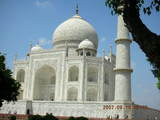 As I respected the restriction on photography inside the main building,
I'll let
Armchair Travel
show the magnificent interior.
As I respected the restriction on photography inside the main building,
I'll let
Armchair Travel
show the magnificent interior.
We got dinner about halfway back to Delhi at a place not recommended by our guide Ani and it was nowhere near as good as the place he sent us for lunch. I got a good night's sleep at Essel Towers and got up in time for my morning run on the side streets of Gurgaon.
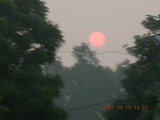
|
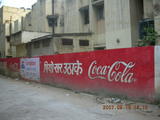
|
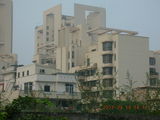
|
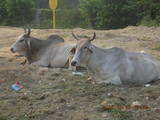
|
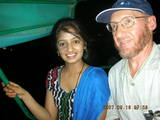
|
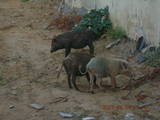
|
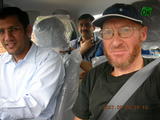
|
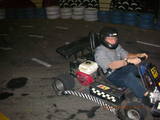
|
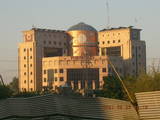 When I planned my trip,
I was concerned about my running opportunities.
India's streets are narrow and crowded
and India's drivers aren't known for being
any nicer to pedestrians than they are to each other.
I found some narrow streets that looked like they might be quiet
in the mornings and figured I could retreat to treadmill running
if they were not quiet enough.
I figured 1000 meters of runnable roadway would be enough
as I could run back and forth and back and forth.
When I planned my trip,
I was concerned about my running opportunities.
India's streets are narrow and crowded
and India's drivers aren't known for being
any nicer to pedestrians than they are to each other.
I found some narrow streets that looked like they might be quiet
in the mornings and figured I could retreat to treadmill running
if they were not quiet enough.
I figured 1000 meters of runnable roadway would be enough
as I could run back and forth and back and forth.
 To my delight, the roads south of Essel Towers
were residential roads, quiet at dawn.
There is a period of about two hours in the morning
when the dogs relinquish the streets
and the drivers are not awake yet.
There were many pedestrians out for a walk
or walking their dogs
along with regular bicycles and bicycle-rickshaws.
We all shared the roads with cows and bulls, dogs, and pigs.
I saw a cat and a pair of monkeys
that I was not quick enough to photograph
before they ran away.
To my delight, the roads south of Essel Towers
were residential roads, quiet at dawn.
There is a period of about two hours in the morning
when the dogs relinquish the streets
and the drivers are not awake yet.
There were many pedestrians out for a walk
or walking their dogs
along with regular bicycles and bicycle-rickshaws.
We all shared the roads with cows and bulls, dogs, and pigs.
I saw a cat and a pair of monkeys
that I was not quick enough to photograph
before they ran away.
Driving in India is vicious. There's an old saying in aviation that the superior pilot is one who exercise superior judgment to avoid having to exercise superior skill. Indian drivers demonstrate superior skill constantly getting out of tight and scary situations that they get themselves into. That they don't hit each other is a relief, but better judgment would move traffic a lot faster there. There is a general cacophony of honking horns as drivers let each other know they're there. On the few stretches of road I ran with automobile traffic, I was honked at as well, part of the India experience.
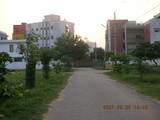 Indian roads have a serious mix of different users.
Trucks, buses, cars, three-wheel taxis, bicycle-rickshaws,
and pedestrians share the road
with cows, pigs, dogs, and other animals.
Indian roads have a serious mix of different users.
Trucks, buses, cars, three-wheel taxis, bicycle-rickshaws,
and pedestrians share the road
with cows, pigs, dogs, and other animals.
Add to this that India drives on the left side of the road and you can see why I elected to let somebody else do the driving while I was there.
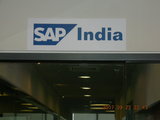
|
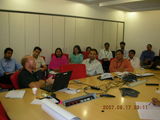
|
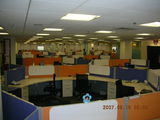
|
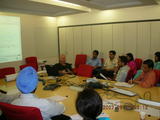
|
 The office looked like any other software-style office
I have been in.
There were working spaces with swivel chairs and modular desks,
laptop computers and multi-button telephones.
Conference rooms were along the perimeter and
predictably overbooked
as we got evicted from two of our previously-booked meetings
by other, larger groups who had reserved the same rooms,
just like here in the United States.
The office looked like any other software-style office
I have been in.
There were working spaces with swivel chairs and modular desks,
laptop computers and multi-button telephones.
Conference rooms were along the perimeter and
predictably overbooked
as we got evicted from two of our previously-booked meetings
by other, larger groups who had reserved the same rooms,
just like here in the United States.
There are frequent, short power outages, both day and night.
I'm guessing the recent introduction of air conditioning
in offices and apartments presents an electrical load
the power companies aren't used to,
but that's just my own guess.
In any case,
any equipment not on some kind of
uninterruptable power supply (UPS) or battery backup
isn't going to work very well.
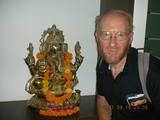 There were some differences between here and there,
a few statues of
Ganesha,
the elephant-head Hindu god,
background chatter in Hindi instead of English
(or German in my German-office experience),
and really-good Indian food in the company cafeteria.
There were some differences between here and there,
a few statues of
Ganesha,
the elephant-head Hindu god,
background chatter in Hindi instead of English
(or German in my German-office experience),
and really-good Indian food in the company cafeteria.
Delhi Sightseeing
Delhi Sightseeing
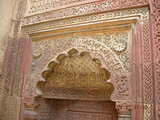
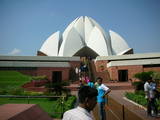
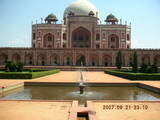
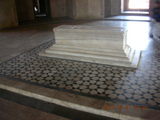
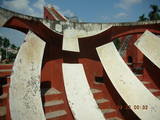
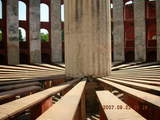
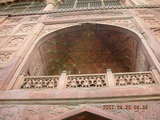
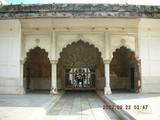
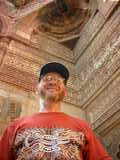 I'm told most tourist accounts of India are accounts of Delhi.
That's natural,
Delhi
is the capital of this great nation
and has been a major city for
thousands of years.
Just as most New Yorkers never bother to ascend
the Empire State Building until they have
out-of-town company,
two members of the office were found
who were
eager
to see the Delhi sights with an out-of-town guest.
I'm told most tourist accounts of India are accounts of Delhi.
That's natural,
Delhi
is the capital of this great nation
and has been a major city for
thousands of years.
Just as most New Yorkers never bother to ascend
the Empire State Building until they have
out-of-town company,
two members of the office were found
who were
eager
to see the Delhi sights with an out-of-town guest.
An aggressive itinerary was planned for me as an out-of-town guest. Six tourist attractions (sights and sites) were planned along with good food and a trip on the new Metro rail system.
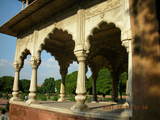 One hears of Delhi and New Delhi.
New Delhi is an urban area inside old Delhi.
I didn't get a good idea of what is close to what
as my hosts Navneet and Hitesh hired a driver for the day
and he figured out how to get from place to place.
One problem for foreigners is that drivers generally speak
the local language and do not speak English.
One hears of Delhi and New Delhi.
New Delhi is an urban area inside old Delhi.
I didn't get a good idea of what is close to what
as my hosts Navneet and Hitesh hired a driver for the day
and he figured out how to get from place to place.
One problem for foreigners is that drivers generally speak
the local language and do not speak English.
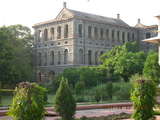 (Funny story:
When I was in
Libya,
one of the bus drivers left a stop
loaded with passengers but without his English-speaking translator.
How was he even going to ask
if anybody knew where the English-speaking translator went?
He went back and found the guy
so we could continue our trip.)
(Funny story:
When I was in
Libya,
one of the bus drivers left a stop
loaded with passengers but without his English-speaking translator.
How was he even going to ask
if anybody knew where the English-speaking translator went?
He went back and found the guy
so we could continue our trip.)
We saw six tourist-type regular things, Qutab Minar, Lotus Temple, Himayan's Tomb, Jantar Mantar, Red Fort, and India Gate, and the Delhi Metro. Most of these had admission fees which were quite a bit higher for foreigners than for native Indians.
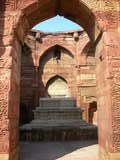
|
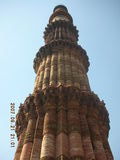
|
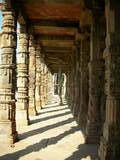
|
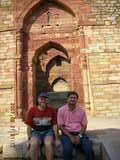
|
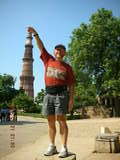
|
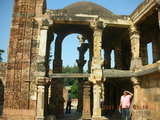 The tour-book pictures of this ancient monument
don't look that interesting,
just a big, ornate, phallus-shaped spire
pointed into the sky.
In fact,
Qutab Minar
is very interesting,
the tower and the surrounding structures.
The tour-book pictures of this ancient monument
don't look that interesting,
just a big, ornate, phallus-shaped spire
pointed into the sky.
In fact,
Qutab Minar
is very interesting,
the tower and the surrounding structures.
The centuries-old tower is magnificently ornate with intricate patterns tapering into the sky. It took 175 years to complete, a government project perhaps?
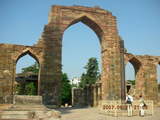 But the tower is only a small part of this
World Heritage Site.
Near the tower are multi-story columns
and high arches,
also highly intricate and very beautiful.
But the tower is only a small part of this
World Heritage Site.
Near the tower are multi-story columns
and high arches,
also highly intricate and very beautiful.
There is a second, even-bigger tower that only got as far as having its foundation constructed. It reminds me of a Calvin-and-Hobbes comic strip where Calvin is building the biggest snowman ever made and announces that a huge snowball he just made is the first of the snowman's ten toes.
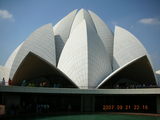
|
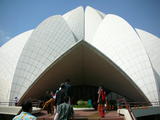
|
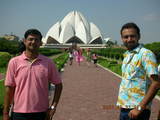
|
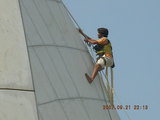
|
This BaHá'í temple is the newest monument on my day's tour (the new Metro is newer, but not a monument) and it is strikingly beautiful. This faith has only eight Houses of Worship with one in Willmette, Illinois, U.S.A., near Chicago. They are building a ninth in Chile.
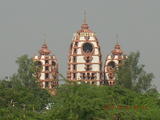 While the BaHá'í faith restricts its services
to be simple, no musical instruments and no sermons,
their architectural presentation in the Lotus Temple
is stunning.
Completed in 1986, this structure seems small and intimate
even though it has 2500 seats in its vast interior.
While the BaHá'í faith restricts its services
to be simple, no musical instruments and no sermons,
their architectural presentation in the Lotus Temple
is stunning.
Completed in 1986, this structure seems small and intimate
even though it has 2500 seats in its vast interior.
We were shepherded into the temple in small groups so it wasn't crowded and we walked around the grounds. One nice touch was seeing the traditional, Hindu Iskcon Temple from this new, untraditional BaHá'í temple.
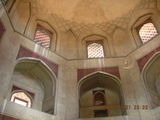
|
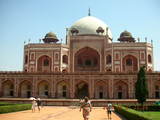
|
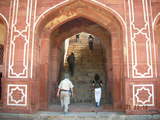
|
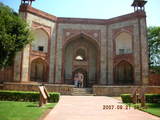
|
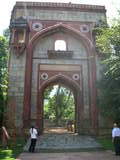
|
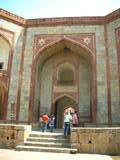
|
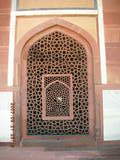
|
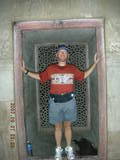
|
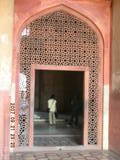
|
Himayan's Tomb is a large, red-sandstone structure about the same age as the Taj Mahal and the same style. So making comparisons is natural for tourists visiting both sites.
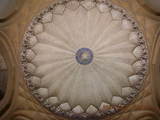 This vast and lovely monument isn't at all sparse,
but the red walls here don't compare
to the inlaid-marble intricacy of Agra's famous tomb.
Making the comparison really isn't fair
because it takes nothing away from the beauty of this place
that there is another even grander.
Tombs shouldn't become a contest,
it's bad enough you have to die to get one.
This vast and lovely monument isn't at all sparse,
but the red walls here don't compare
to the inlaid-marble intricacy of Agra's famous tomb.
Making the comparison really isn't fair
because it takes nothing away from the beauty of this place
that there is another even grander.
Tombs shouldn't become a contest,
it's bad enough you have to die to get one.
The stone designs of Himayan's Tomb are intricate and lovely, the shapes are designs are wonderful.
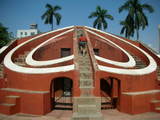
|
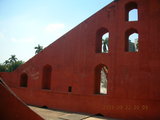
|
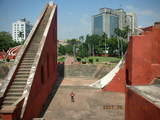
|
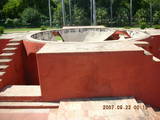
|
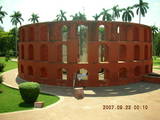
|
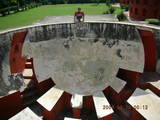
|
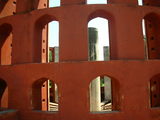
|
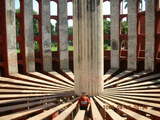
|
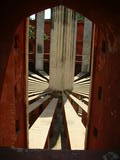 When my eyes fell on the red-sandstone shapes
of Jantar Mantar,
my first impressions were
of marvelous abstract artistic expression.
Imagine a playground of human-scale shapes
with steps and passages in and among the forms in stone.
When my eyes fell on the red-sandstone shapes
of Jantar Mantar,
my first impressions were
of marvelous abstract artistic expression.
Imagine a playground of human-scale shapes
with steps and passages in and among the forms in stone.
In fact, Jantar Mantar is an astronomical observatory built in the early 1700's to measure the heavens more accurately than small, metal instruments. This was the first of five stone observatories in north India.
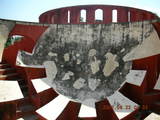 There is a super-accurate sundial,
an instrument for measuring altitude angles,
a very-precise lunar-observation calendar,
and a special building for seeing the equinoxes.
While the scientific adult in me enjoyed the precisions
of these three-centuries-old instruments of heavenly measurement,
the child in me enjoyed running up and down the stairs
poking through narrow gaps in the red-stone, mathematical forms.
There is a super-accurate sundial,
an instrument for measuring altitude angles,
a very-precise lunar-observation calendar,
and a special building for seeing the equinoxes.
While the scientific adult in me enjoyed the precisions
of these three-centuries-old instruments of heavenly measurement,
the child in me enjoyed running up and down the stairs
poking through narrow gaps in the red-stone, mathematical forms.
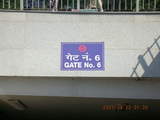
|
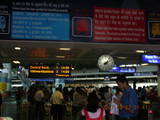
|
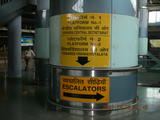
|
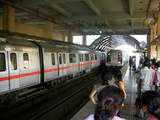
|
After lunch, my hosts took me for a short ride on the new Metro. Combining underground subway rails with above-ground train tracks, the new light-rail transport could revolutionize travel in and around India's capitol city.
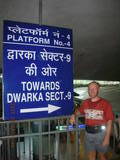 Like most new transport systems,
the Metro I saw is clean and well marked,
a pleasant way to travel.
Indians vying for scarce seats
don't seem to appreciate the western protocol
of waiting for people to leave a train before boarding,
so getting off the train meant pushing my way off.
Like most new transport systems,
the Metro I saw is clean and well marked,
a pleasant way to travel.
Indians vying for scarce seats
don't seem to appreciate the western protocol
of waiting for people to leave a train before boarding,
so getting off the train meant pushing my way off.
Montreal's Metro system is forty years old. When I last rode it four years ago it was still clean and quiet. There's every reason to believe Delhi's Metro will continue to be an effective and enticing way to travel in decades to come.
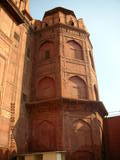
|
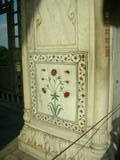
|
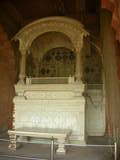
|
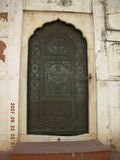
|
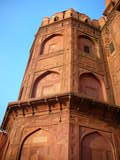
|
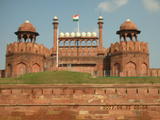
|
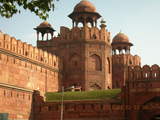
|
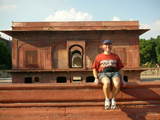
|
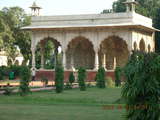
|
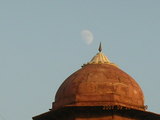 Our afternoon began with the Red Fort,
the traditional center of Indian government
built in the early 1600's.
It was the home of Indian emporors and kings.
When India becamse independent on 1947 August 15
the Red Fort became the center of Indian independence.
That was sixty years ago.
Our afternoon began with the Red Fort,
the traditional center of Indian government
built in the early 1600's.
It was the home of Indian emporors and kings.
When India becamse independent on 1947 August 15
the Red Fort became the center of Indian independence.
That was sixty years ago.
The Red Fort was protected by the Indian Army, uniformed soldiers with scary-looking weapons, appropriate respect for such an important monument. Before contending with armed, military conflict, any invaders trying to take the Red Fort would have to cross borders into India, cross hundreds of kilometers of harsh countryside, put up with brutal old-Delhi traffic, and get past dozens of souvenir stands.
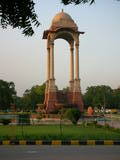
|
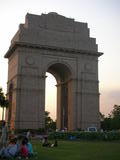
|
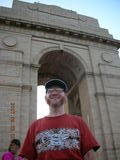
|
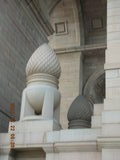
|
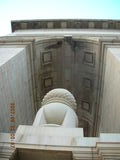
|
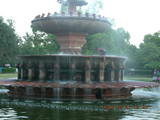 Our final stop was India Gate,
another commemoration of Indian independence.
The names of Indian soldiers who died
in the
World War
defending liberty
are engraved on this marvelous monument
illuminated by an Eternal Flame.
Our final stop was India Gate,
another commemoration of Indian independence.
The names of Indian soldiers who died
in the
World War
defending liberty
are engraved on this marvelous monument
illuminated by an Eternal Flame.
Like many of the world's monuments to liberty and independence, India Gate is surrounded by a lovely, grassy park with fountains and vendors selling snacks. This was a lovely place to see the soft Indian sunset on a Saturday evening.
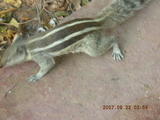
|
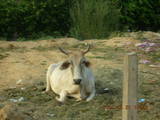
|

|
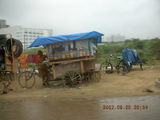
|
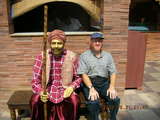 We Americans hear about World-Cup soccer
(called "football" in Europe),
but we hear little of cricket.
A huge part of the world goes nuts over cricket
the way most of the rest of the world goes nuts over soccer
and Americans go nuts over football, basketball, and baseball.
(With the running boom going full-tilt-boogie,
some of that enthusiasm is seeping into track and field,
but I'm not holding my breath for major-league attention.)
It turned out
We Americans hear about World-Cup soccer
(called "football" in Europe),
but we hear little of cricket.
A huge part of the world goes nuts over cricket
the way most of the rest of the world goes nuts over soccer
and Americans go nuts over football, basketball, and baseball.
(With the running boom going full-tilt-boogie,
some of that enthusiasm is seeping into track and field,
but I'm not holding my breath for major-league attention.)
It turned out
• Indians are huge cricket fans,
• the world championship of cricket was during my stay,
• the Indian team made the finals in South Africa,
• India and Pakistan are fierce rivals,
• Pakistan was the other team in the cricket final, and
• I watched the final match on television.
So how exciting can a cricket match be? I remember hearing that matches run over days and days, all the excitement of watching paint dry. Well, the latest version is called Twenty20, it runs about three hours, and I was on the edge of my seat for the final match.
Let me explain the game of cricket as it was explained to me. It's sort-of like baseball like rugby is sort-of like American football.
There is a pitcher called a "bowler" and a batter. The batter stands in front of three "wickets" which count as outs if they are knocked over, so the batter has to protect the wickets. There is another runner in the field and the two runners exchange places for a run when the ball is in play and far enough away not to threaten the wickets. Catching a fly ball also counts as an out, a wicket. So the bowler tosses the ball on the run to the batter and the two runners run back and forth after a hit. If the ball goes out of the park, then it counts as six runs. Also, (I think this is right) if the ball hits the back wall, then it counts as four runs.
Each team is at bat once for 120 pitches in Twenty20. The term comes from the division of pitches into batches of six, an "over" is six pitches, so Twenty20 is twenty overs for each team and that's it. The at-bat session also ends if a fielding team gets ten wickets (outs).
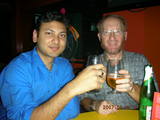 The live-televised match was
in the South African afternoon sunshine,
dinnertime in India and Pakistan.
India was at bat first, their choice,
and scored something like 158 runs, not a good score.
Now the Pakistani team had to score more than that
in their twenty overs, not terribly hard in championship play
(as I was told).
The Indian team held them back for about twelve overs,
and the television coverage had graphs of scoring curves by over
comparing the two team trajectories
the way American television shows football plays
and other sports graphics.
Then the Pakistani team hit a whole bunch of six-run
homers
out of the park
while the Indian team managed to accumulate nine wickets.
The live-televised match was
in the South African afternoon sunshine,
dinnertime in India and Pakistan.
India was at bat first, their choice,
and scored something like 158 runs, not a good score.
Now the Pakistani team had to score more than that
in their twenty overs, not terribly hard in championship play
(as I was told).
The Indian team held them back for about twelve overs,
and the television coverage had graphs of scoring curves by over
comparing the two team trajectories
the way American television shows football plays
and other sports graphics.
Then the Pakistani team hit a whole bunch of six-run
homers
out of the park
while the Indian team managed to accumulate nine wickets.
With one over left in the game the Indian team was ahead only nine runs, not a safe margin with the Pakistani batter hitting so many six-run homers out-of-the-park. I'm neither Indian nor a cricket fan, but I was on the edge of my seat. I can only imagine the tension my sofa-mates were feeling. The gap was narrowed to five runs, there were still three or four pitches left, and an Indian fielder caught a fly ball for the tenth wicket, the game was over, and the Indians were the world champions of cricket.
As you might imagine, not much work got done in the office the day of the match in anticipation. As you might also imagine, not much work got done the day after the match in celebration.

|
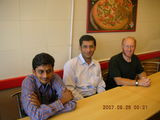
|
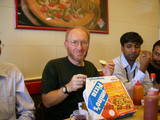
|
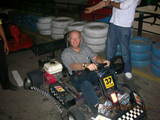
|
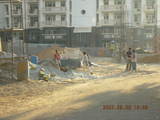
|
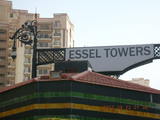
|
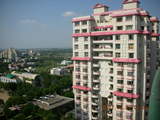
|
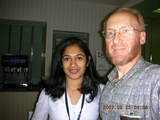
|
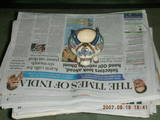 Leaving was a mob scene.
With an electronic ticket,
it hadn't occurred to me that I would need
a paper-copy itinerary to get into the airport.
When it's time to leave,
have passport and official-looking paper itinerary handy
to get into Delhi's Indira Gandhi International Airport (DEL)
and get there early.
Leaving was a mob scene.
With an electronic ticket,
it hadn't occurred to me that I would need
a paper-copy itinerary to get into the airport.
When it's time to leave,
have passport and official-looking paper itinerary handy
to get into Delhi's Indira Gandhi International Airport (DEL)
and get there early.
The waits for flights are long and boring, that's part of international travel. I waited hours to spend even more hours on the airplane, my flight was a sixteen-hour nonstop flight to Chicago O'Hare (ORD).
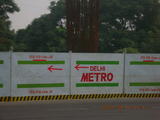 Just to make matters more intensely boring,
I had a six-hour stop at ORD before my next flight
to my destination.
Just to make matters more intensely boring,
I had a six-hour stop at ORD before my next flight
to my destination.
I bought enough stuff at the Taj Mahal in Agra that I ended up checking my luggage. Alas, airline baggage handlers aren't as gentle as I would like and my Taj Mahal model got broken up. I was able to effect some repairs after a china-repair shop quoted me a price of U.S. $500 to fix it.
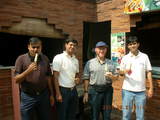
|
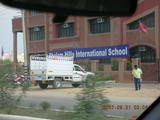
|
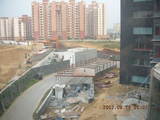
|
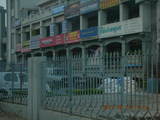
|
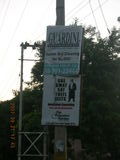 India is a strange mix,
a growing population with a far-faster-growing technical economy.
Much of India's traditional charm and cost advantage
comes from having a large fraction of its population
leading hard lives in poverty.
It's nice to get handmade goods,
rickshaw
transport,
and other manual-labor services
for just a few rupees,
but it can't be nice for those providing those services.
As rents and food prices go up to match the west,
those people are going to find it harder to live
on their small wages.
India is a strange mix,
a growing population with a far-faster-growing technical economy.
Much of India's traditional charm and cost advantage
comes from having a large fraction of its population
leading hard lives in poverty.
It's nice to get handmade goods,
rickshaw
transport,
and other manual-labor services
for just a few rupees,
but it can't be nice for those providing those services.
As rents and food prices go up to match the west,
those people are going to find it harder to live
on their small wages.
India relies on a cost advantage in marketing its services. Software is in a bad state worldwide, costing more and providing less year after year, and India has been the route to low-cost software. If software going to be lousy and labor intensive, then we may as well pay less per hour for it. Now that India's information-technology (IT) workforce is being paid western salaries, the subcontinent is going to have to find new reasons for the west to hire them for software.
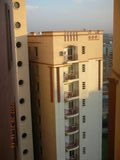 My impression of this newly-hired work group in Gurgaon
is they have no worries on the quality issue.
This was not a me-too, like-the-west-only-cheaper group,
at least not in my interaction with them.
My impression of this newly-hired work group in Gurgaon
is they have no worries on the quality issue.
This was not a me-too, like-the-west-only-cheaper group,
at least not in my interaction with them.
American have a growing resentment of our companies hiring Indian call centers to resolve customer problems. This is in addition to them being worried about their jobs being outsourced to India. Low-cost outsourcing has been exactly the failure a reasonable person would expect of hiring more people for less to do the same job, but that hasn't stopped American management from following that path.
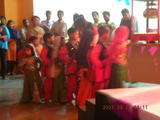 Prime Minister Nehru
made a decision around 1960 that India was going to be
a technological powerhouse,
the kind of decision I think American should make in 2007.
He founded six Indian Institutes of Technology (IIT) colleges
along with other science-research efforts.
The result was a starving nation of about 50 crore
(500 million) in 1967
grew to a net-exporter-of-food nation of 112 crore
(1120 million) in 2007.
Forty years have seen dramatic, positive changes in India.
Prime Minister Nehru
made a decision around 1960 that India was going to be
a technological powerhouse,
the kind of decision I think American should make in 2007.
He founded six Indian Institutes of Technology (IIT) colleges
along with other science-research efforts.
The result was a starving nation of about 50 crore
(500 million) in 1967
grew to a net-exporter-of-food nation of 112 crore
(1120 million) in 2007.
Forty years have seen dramatic, positive changes in India.
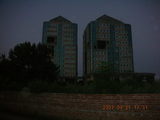
|
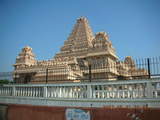
|
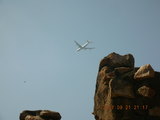
|

|
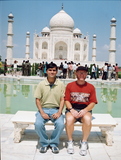 Now India's underclass is in trouble.
Rents are going up, food prices are going up,
and it's going to be very hard for unskilled manual laborers
to earn enough to live and to eat.
Now India's underclass is in trouble.
Rents are going up, food prices are going up,
and it's going to be very hard for unskilled manual laborers
to earn enough to live and to eat.
India's success is going to be hard on its IT workers, too. When pretty-good living was cheap in India, it was easy to create lots of jobs there. Now that they're going to have to earn western wages, they're going to have to convince employers that they're western quality. With the additional costs of distance and travel, time zones and communication management, and language and accent barriers, India's going to have to sell the world that their IT community is better, enough to justify the extra workload.
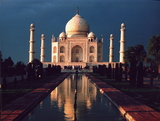 India has another impending crisis in its oil market.
Ever-thickening traffic jams mean India's maniacal drivers
are going to need ever-increasing fuel for their cars
and are going to breath ever-more-polluted air.
Natural gas is a terrific alternative to gasoline,
clean and cheap,
but the global-warming crowd are going to fight that change.
After all, natural gas is carbon based.
India has another impending crisis in its oil market.
Ever-thickening traffic jams mean India's maniacal drivers
are going to need ever-increasing fuel for their cars
and are going to breath ever-more-polluted air.
Natural gas is a terrific alternative to gasoline,
clean and cheap,
but the global-warming crowd are going to fight that change.
After all, natural gas is carbon based.
|
8:47:59 Mountain Standard Time (MST). 18457 visits to this web page. |